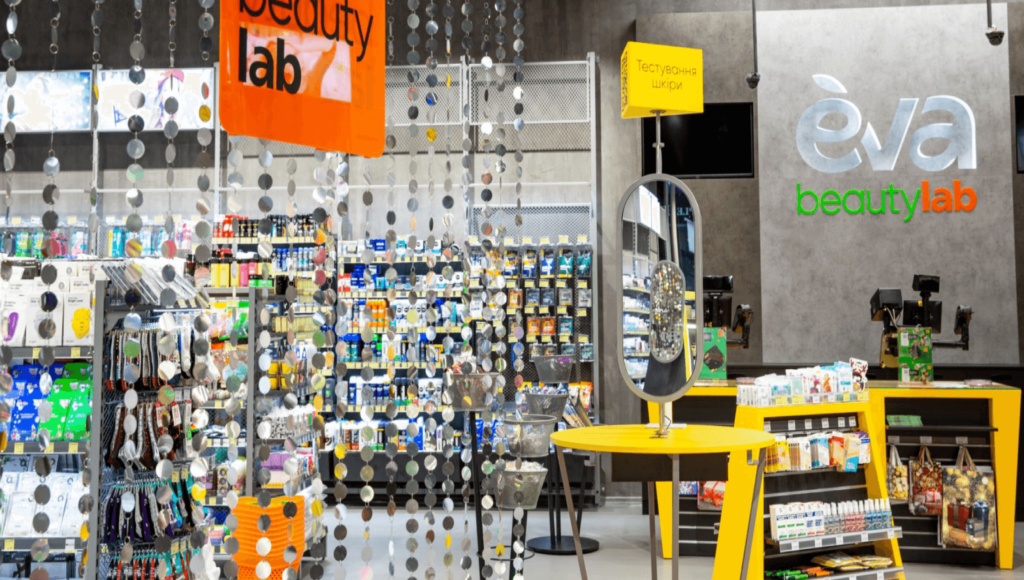EVA is the largest drogerie retailer in Ukraine. It has almost 1200 stores with 18 thousand employees. These past few years the retailer has been expanding rapidly, opening 189 new stores in 2019 and 219 in 2020. Business growing so rapidly requires a leveled approach to management and active digitalization of internal processes to maintain efficiency. To optimize the product range management, the retailer added the planogram optimization solution to their IT-ecosystem in 2020.
Management of the product range with an average of 12 thousand SKUs for one store is done through category formats. Every format is determined by unique identifiers – range planogram, geolocation, retail space configuration, etc.

Creating planograms requires category managers to add corrections and pass planograms to stores quickly while managing planograms in every store. Doing this job manually is too labor-intensive and time-consuming. That’s why the retailer decided to implement the shelf space management solution Retano Shelf Space.
During the pilot project, the planogram management process was automated for 50 stores. To make the experiment honest stores of different formats with experienced personnel well-versed in the company’s business processes.
The test group launch was successful. Based on the results of the test the retailer decided to apply the new planogram management system to all stores.

Andrey Morozov, the head of the product range management department at EVA shared the results of Retano Shelf Space implementation.
“The costs of personnel involved in planogram creation have decreased“
Before the system’s implementation, category managers had to create planograms for every format manually. This was taking a lot of time. Now planograms are tied to category formats based on retailer’s standards.
Distribution by formats is based on brand, product category, price, and other category properties. The system distributes products on shelves using horizontal and vertical planograms.
When we are preparing to open the new store, we need to create planograms of a required format. The system takes into account our expansion speed. It automates many processes, giving our category managers more time to concentrate on their tasks.
“The incidence of errors during planogram generation has been significantly reduced“
We started using the multistage digital confirmation tool to approve changes in planograms. Now our stores only receive planograms approved by department heads. This doesn’t take a lot of time. The interface is user-friendly, allowing us to compare the state of planograms before and after changes.
“The management and control of store activities have become more efficient“
All employees have access to the Retano Shelf Space portal. There they get the information on tasks, inventory, list of products on every shelf, current and previous planogram versions.
Changes are uploaded on the portal immediately, employees get notified and can start enacting them. After completing their tasks they need to submit the photo proof on the same portal.
We are planning to launch Retano Shelf Space mobile app in the near future. This way we would be able to control planograms through realograms.
Right now we are applying the system to the entire chain. The most important goal at the current stage of the project is to improve communications with personnel. The system has tools to receive feedback from stores – portal and mobile app. Just like with every new technology, to implement it properly you need to motivate personnel using it.
After implementing the system we plan to start fine-tuning planogram management processes. Retano Shelf Space has a tool analyzing planograms by formats and separate stores. Once we have more data we will have a more accurate picture. It will be easier to work with SKU and direct customer flow in the store.
Andrey Morozov, EVA
Increasing the number of stores always leads to the necessity of managing planogram by format and clusters, because managing every store’s planogram separately becomes too expensive. Even with 50-100 small stores, managing planograms manually is problematic. The solution is either to hire more people or to automate the process.
Retano Shelf Space inventory clusterization and synchronization make management flexible and practical. The retailer gains access to planogram analysis by store formats, inventory clusters, and separate stores. If the retailer experiences SKU sales losses on the shelf of similar format stores, the problem can be localized on the level of the specific store. Then the retailer can fix the problem without changing the planogram for the entire format. For example, identify the most high-turnover products by ABC and increase the amount of these products in planograms.
Retano Shelf Space hot and cold zones analysis will show how inventory rearrangement in stores of the same format can improve sales indicators. The correct placement of shelves can direct customers from low-turnover products to high-turnover products, drawing their attention to promos.
